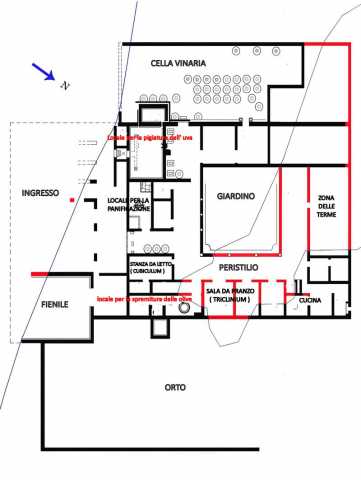Roman facilities' discovery in Ponticelli, happened in the first half of 80s during the building of a series of popular houses in the city quarter Tufarelli's area, among the current Via Bartolo Longo, Via Camillo De Meis and Via Della Villa Romana. During the occasion there were recovered different finds belonging to the Roman era and the intervention of Naples and Caserta Superintendence to Archeological Riches involved the work's suspension to permit a deeper exploration of the area.

Archeological excavations were executed between 1985 and 1987, and then one more time in 2007 when they brought to light two Roman Villas. One belonging to the Republican Era that later was destroyed by the Vesuvius’s eruption in 79 A.D., (the same eruption that destroyed Pompei and Ercolano), and another that, instead, reoccupied the area at a later stage to the above-mentioned eruption, between II and V or VI century A.D. In both cases, they are rustic villas that were intended to the agricultural exploitation of the area.
The building, well preserved in different environments, represents an interesting example of rustic manor, with locals destined to the production of oil and wine.
Extended on a surface of 2000mq, it had his hub in a central arcade that allowed the orderly distribution of the environments, separating the productive area to that destined to the living of people. In the South part of the arcade garden there are environments dedicated to the agricultural processing. Over some environments used for planning, there are some environments destined to the olives processing for the production of the oil in useless quantities to the subsistence of the inhabitants of the manor: there were found a little winepress and some tanks of decantation for the production of the olive paste.
In the same area we find other regional environments for processing grapes to produce wine which instead were larger with a huge wine cellar, where there were storage containers for wine (dolia). There was also a big press and the tub used for the fermentation of must (lacus).
The eruption of Vesuvius in 79 a. C. led to a sudden abandonment of the villa by its inhabitants. This has allowed us to recover most of the furnishings used in the houses at the time of the eruption. But the most important finding was the discovery of one of the inhabitants of the villa, found in a cellar under the local wine press where he had sought refuge during the eruption. Here he died burned alive by a burning cloud that vaporized the body. Among the items that the victim was carrying, it was set up the signet ring of the last owner of the villa, Caius Olius Ampliatus, descendant of one of the veterans of Silla that, in the first half of the first century b. C., they were allocated in the Vesuvius area as settlers.
Ingresso: entrance
Fienile: barn
Locali per la panificazione:local for bread-making
Locale per la pigiatura dell'uva: local for crushing grapes
Locale per la spremitura delle olive: local for squeezing olives
Orto: vegetable garden
Cella vinaria: cellar
Peristilio: peristyle
Sala da pranzo: dining room